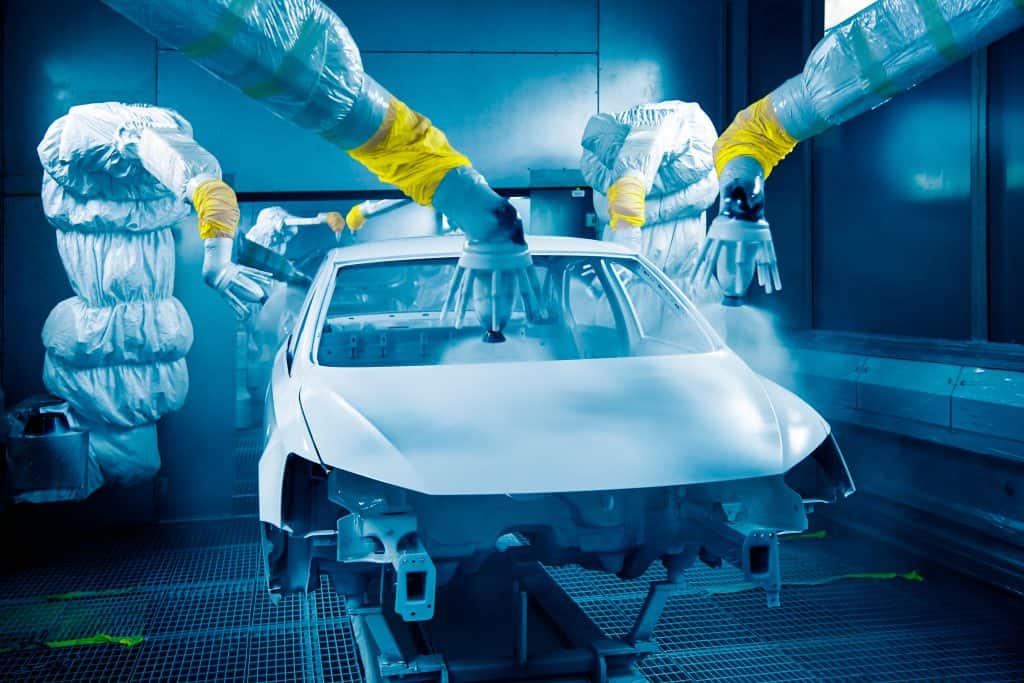
How to Reduce Car Paint Defects and Rework with Automated Inspection?
Share
In today's fast-paced automotive industry, reducing car paint defects and rework with automated inspection has become a pressing goal for manufacturers and technicians alike. With the demand for high-quality finishes at an unprecedented level, the integration of technology in paint inspection processes is not just beneficialit's essential. This article delves into the innovations in automated inspection systems and how they significantly improve the efficiency of paint quality control.
As tech professionals and enthusiasts, it's crucial to understand how automated inspection systems operate and the myriad of benefits they offer. From enhancing the quality of the paint to reducing costs, these systems represent the future of automotive manufacturing.

Understanding Paint Defects in Automotive Manufacturing
Before diving into the solutions offered by automated inspection, it's essential to grasp the common types of paint defects seen in vehicles. These defects can result from various factors including environmental conditions, application methods, and material quality. Some of the most prevalent include:
- Orange Peel: A textural defect that gives the surface a bumpy appearance, mimicking the skin of an orange. To learn more about this, visit our article on orange peel on car paint.
- Fish Eyes: These are small, round defects that appear as a result of contamination on the surface before painting.
- Color Matching Issues: Problems that arise when the paint color applied does not match the original vehicle color.
The Importance of Automated Inspection in Reducing Defects
Automated inspection plays a pivotal role in minimizing paint defects by employing advanced technology that simplifies and enhances quality control measures. Here are several ways these systems contribute:
1. Improved Detection of Paint Defects
Automated inspection systems utilize high-resolution cameras and sensors to identify defects during the painting process. This technology can detect minute flaws that the human eye may overlook, thus ensuring only high-quality products move further along the production line.
2. Consistency and Standardization
One of the key advantages of automation is its ability to maintain consistent standards. Automated systems follow precise protocols which help in achieving uniformity across all vehicles, greatly reducing the chances of defects.
3. Increased Efficiency and Reduced Costs
Integrating automated inspection can drastically reduce the time spent on inspecting and reworking defective paint jobs. Lower labor costs and reduced material waste translate directly to higher profit margins for manufacturers.
Implementing Automated Inspection Technologies
For tech professionals looking to integrate automated inspection systems, understanding the necessary equipment is key. Common technologies include:
- 3D Vision Systems: These systems create a three-dimensional image of the painted surface, allowing for thorough analysis.
- Laser Scanning: Used to detect uneven paint thickness and surface imperfections.
- AI-Powered Analysis: Now, systems can learn from previous inspections and improve defect detection over time.
Challenges in Transitioning to Automated Inspection
While the benefits are clear, implementing automated inspection systems is not without challenges. Significant investment in technology and training is required. However, the long-term advantages far outweigh the initial costs.
Future Trends in Automated Paint Inspection
As technology continues to advance, we can expect even more sophisticated systems in the future. For instance, the role of AI and stroboscopy is becoming more prevalent, providing real-time data analytics that can predict and mitigate potential defects before they occur.
FAQs
What types of defects can automated inspection detect?
Automated inspection systems can detect various defects including orange peel, fish eyes, and color mismatches very efficiently.
How does automated inspection save costs?
By catching defects early in the process, automated inspection reduces the amount of rework needed, thus saving on labor and material costs.
Are automated inspection systems easy to integrate into existing workflows?
While there is an initial investment, most modern automated inspection systems are designed to integrate smoothly into existing workflows with minimal disruption.

Conclusion
In conclusion, reducing car paint defects and rework with automated inspection is not just a trend; it is the future of automotive manufacturing. By leveraging these technological advancements, manufacturers can create vehicles with superior paint finishes while optimizing production processes.
For additional insights on painting your vehicle, consider checking platforms like perfect car paint jobs and methodologies for applying paint successfully.
Embracing automated inspection is a crucial step for any automotive manufacturing entity striving for excellence in quality and efficiency.
